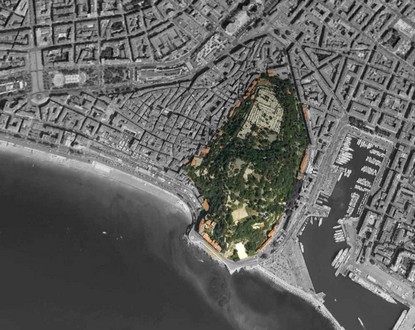Overlooking the city, 92 meters above sea level and offering an exceptional panorama, Castle Hill is a symbol of our city’s heritage. A visit is organized today at 10 a.m. in the presence of Christian Estrosi, mayor of Nice and Jean-Marc Giaume, deputy in charge of archaeology, history, and the transmission of Memory.
This excavation site, conducted as part of a Collective Research Project linking the City of Nice, the CEPAM laboratory (CNRS/University of Nice), and the Ministry of Culture, was initiated in 2009. It focuses on two major sites of Nice’s history: the cathedral and its surroundings on one side and the fortification on the other.
It also offers the opportunity to serve as a training site by providing practical internship opportunities to anthropology and archaeology students.
The goal of this excavation program is to answer many questions about the history and settlement of the County and the city of Nice.
Excavations have already uncovered the remains of the early Christian cathedral (2nd half of the 5th century). This year, further excavation in the north and south aisles, as well as the choir area, allows a better understanding of the transformations of the early Christian and medieval cathedral (5th-13th century). Finally, and probably most spectacularly, the excavations have uncovered the remains of the north wall of the cathedral, which collapsed during the destruction of the fortifications in 1706.
For the first time, a fragment of the elevation of the cathedral is discovered, with everything else having disappeared. South of the cathedral, excavation of the old cemetery continues without interruption. Active collaboration with the bio-cultural anthropology laboratory of Marseille, specialists in this type of excavation, has been initiated. This has revealed a very singular type of grave, dating from the Middle Ages but built like in Roman Antiquity!
Furthermore, in the area of the former Comtal Castle, a stratigraphy remnant dating, it seems, to the end of the Neolithic or the beginning of the Bronze Age in the 3rd millennium BC has been discovered. This is currently the oldest evidence of human occupation on Castle Hill.


